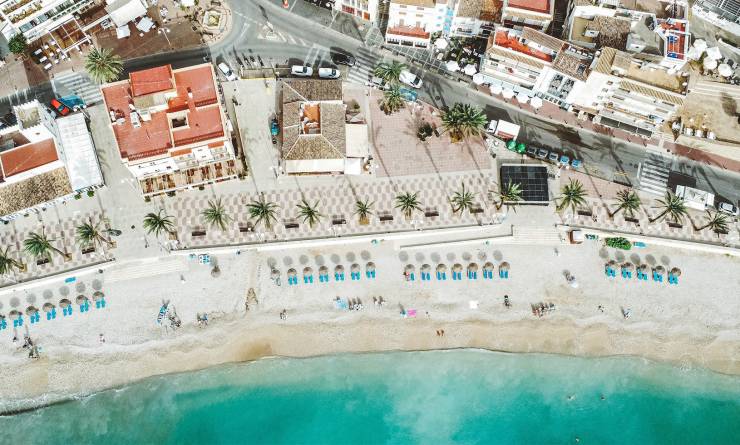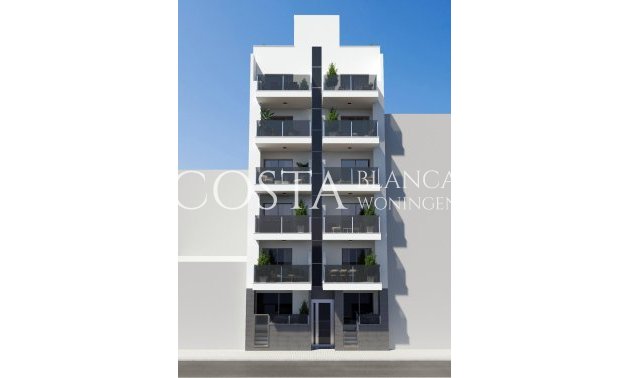Everything about capital gains tax in Spain for (non-)residents.

Selling your property in Spain with a profit sounds great, right? Before you start dreaming too much, let's talk about a crucial factor that can affect your earnings: the capital gains tax.
Let’s take a look at how this works and, importantly, whether it is the same for residents and non-residents.
What is Capital Gains Tax? Capital gains tax is a tax on the profit you make from selling real estate. It’s important to note that this tax is not only applicable in Spain but also in many other countries. In Spain, the capital gains tax consists of municipal capital gains tax and national capital gains tax.
How is the municipal capital gains tax calculated? First, there is the municipal capital gains tax, commonly known as "Plusvalía." Whenever a property is sold or transferred, a declaration of this tax must be submitted. In the case of a sale or donation, the potential gain is realized by the seller or donor, and therefore the Plusvalía must be paid by them. In the case of inheritance, this tax is owed by the heirs.
The calculation of this tax was revised at the end of 2021. Since then, there are two different methods of calculation, and you can always choose the most favorable one.
The first method calculates the capital gains tax based on the increase in the value of the land during the period of ownership. The higher this value and/or the longer you have owned the property, the higher the tax amount.
The second method is based on the actual gain realized from the transfer of the property. This is determined by comparing the amounts stated in the notarial deeds of acquisition (e.g., purchase or donation) and transfer (e.g., sale or inheritance). Unlike national capital gains tax, costs such as taxes or renovations cannot be taken into account.
There are no exceptions to the obligation to declare the municipal Plusvalía tax. Everyone must declare it, whether they are Spanish or foreign; whether they are residents in Spain or not; regardless of their age; whether it concerns a primary residence or a second home; and whether it is a sale, inheritance, or donation.
How is the national capital gains tax calculated? Here, you are taxed on the actual gain realized. This is the difference between the purchase price and the sale price of your property. However, you may add certain costs to the purchase price, reducing the difference and thus the tax owed. Costs such as notary fees, registration fees, taxes (including Plusvalía), and certain renovation expenses, like adding a pool or a garage, can be deducted. Even the costs of a real estate agency when selling the property may be considered.
It is essential to note that all amounts taken into account must be proven with official invoices. Any other documents, such as contracts, receipts, or delivery notes, are not accepted and therefore not considered. For the purchase and sale prices, the amounts listed in the notarial deeds apply.
Residents vs. Non-residents Now that we have a general understanding of capital gains tax and the basis on which it is calculated, let’s address the key question: how much do I pay, and is there a difference in how this tax is applied to residents and non-residents?
In short, non-residents are subject to a flat rate of 19%. For residents, there is a progressive rate ranging from 19% to 23%.
Residents For residents in Spain, capital gains tax is applied progressively, meaning the rate increases as the profit increases. This can range from 19% to 23%. The good news is that residents can also benefit from tax-free thresholds, potentially allowing smaller profits to remain untaxed. Residents may also benefit from certain additional reductions or exemptions (see further).
Non-residents Non-residents face a fixed tax rate of 19% on the capital gains from the sale of real estate. Unlike residents, non-residents do not have access to tax-free thresholds. This means that any profit, no matter how small, is subject to taxation.
Exemptions and reductions There are several exemptions and reductions, of course, subject to certain conditions.
A first exemption for residents is, as we know it in Belgium, for the family home. When you, as a Spanish resident, sell your family home with the intention of buying a new family home within 2 years after the sale, whether in Spain or not, you do not pay any capital gains tax.
There is also no tax to be paid on a sale if the seller is 65 years or older, is a resident in Spain, and the property has been correctly declared as the legal residence, the vivienda habitual, in the income tax return for the past 3 years.
There are also partial exemptions for properties purchased or acquired before the 1990s.
Withholding The Spanish tax authorities withhold 3% of the sale value when a non-resident sells real estate. In practice, the buyer transfers 3% of the purchase price to the Spanish tax authorities, meaning you receive less. This is a legal obligation. This measure ensures that the Spanish treasury receives the owed (capital gains) tax from non-residents.
If, after making the calculation, you find that you have realized little or no capital gain, you can reclaim the 3% in whole or in part. If you have made a larger capital gain and owe more tax than the 3% already withheld, you will need to pay the difference.
If the sellers are residents, there is no withholding, and this tax does not need to be settled immediately but must be included in the next income tax return.
As a seller, you must file the capital gains tax return within 4 months of selling your property.
Conclusion In summary, there are differences between the two situations, with residents enjoying certain tax advantages, such as progressive rates and tax-free thresholds, while non-residents face a fixed rate without such benefits.
Before starting your Spanish real estate adventure, it is advisable to seek professional advice to obtain the most up-to-date information and understand any potential changes in the legislation. This way, you can fully enjoy the benefits of your property without unpleasant tax surprises!





















